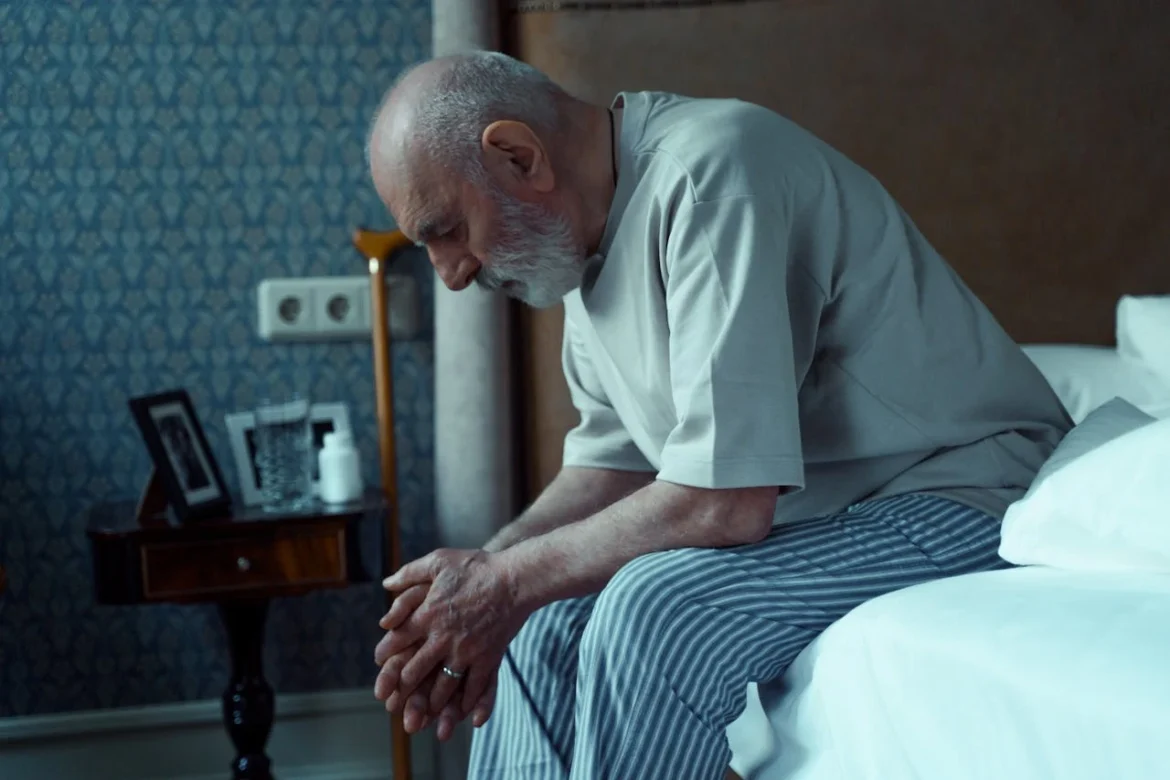Deconditioning syndrome is a condition many people encounter after extended periods of inactivity, illness, or bed rest. Its effects can be profound, impacting physical strength, coordination, and even mental health. Recovery may feel like an uphill battle, but with the right strategies and support, most individuals can regain their health and independence.
This comprehensive guide explores the causes, symptoms, and impacts of deconditioning syndrome, as well as actionable recovery and prevention strategies. Whether you’re caring for a loved one, recovering from illness, or looking to learn more about this condition, this guide will equip you with valuable insights.
Table of Contents
- What Is Deconditioning Syndrome?
- Key Symptoms of Deconditioning Syndrome
- Which Body Systems Are Affected?
- How Quickly Does Deconditioning Start?
- How Long Does Recovery Take?
- Reversing Deconditioning: Steps to Recovery
- Challenges During Recovery
- Preventing Deconditioning Syndrome
- COVID-19 and Deconditioning
- Resources for Rehabilitation
- When to Seek Professional Help
- Final Thoughts: Regaining Strength, Independence, and Confidence
- References
What Is Deconditioning Syndrome?
Deconditioning syndrome refers to a set of physical and mental symptoms caused by prolonged periods of inactivity. Often seen after hospital stays, chronic illnesses, or injuries, it leads to a decline in muscle strength, stamina, and overall bodily function.
This condition exemplifies the “use it or lose it” principle. When the body remains inactive, it redirects energy away from underused systems like muscles and bones, causing them to weaken. This not only affects physical abilities but can also impact mental health, leading to feelings of frustration and helplessness.
Key Symptoms of Deconditioning Syndrome
Deconditioning syndrome is not limited to one specific symptom but manifests as a combination of physical and emotional challenges.
Physical Symptoms:
- Muscle Weakness: Difficulty performing everyday tasks like walking, lifting, or standing.
- Reduced Balance and Coordination: Increased risk of falls or injuries.
- Loss of Bone Density: Greater vulnerability to fractures and bone-related conditions.
- Fatigue: Persistent low energy levels and quick exhaustion during activities.
- Shortness of Breath: Difficulty catching breath even during light exertion.
- Dizziness: A sense of lightheadedness, especially when standing.
Emotional and Mental Symptoms:
- Mood Changes: Increased feelings of frustration, depression, or apathy.
- Cognitive Issues: Trouble concentrating, memory problems, or “brain fog.”
- Loss of Independence: Inability to perform self-care tasks can lower confidence and self-esteem.
Which Body Systems Are Affected?
Deconditioning syndrome impacts multiple systems throughout the body, including:
- Musculoskeletal System: Muscle atrophy and bone density loss are common due to inactivity. These changes increase the risk of fractures and reduce physical strength.
- Cardiovascular System: The heart becomes less efficient, reducing circulation and endurance.
- Respiratory System: Prolonged immobility can lower lung capacity, making breathing difficult during even light physical activity.
- Nervous System: Prolonged inactivity can impair coordination, balance, and cognitive function, leading to slower reflexes and decreased mental sharpness.
How Quickly Does Deconditioning Start?
Deconditioning can set in alarmingly fast. Research indicates that muscle atrophy begins within hours of immobility. Within just one week, significant strength loss is evident, especially in older adults. A 2022 study revealed that 37.3% of older adults developed sarcopenia (severe muscle loss) after just seven days of inactivity.
Factors such as age, pre-existing health conditions, and the level of physical activity prior to immobility can accelerate the onset of deconditioning.
How Long Does Recovery Take?
Recovery from deconditioning is often a slow and steady process. A general rule of thumb suggests it takes twice as long to regain strength as it does to lose it. For instance, one week of bed rest may require two weeks of targeted physical activity to restore muscle function.
Recovery timelines vary based on:
- The individual’s age and baseline fitness level.
- The duration and severity of inactivity.
- The presence of underlying health conditions.
Reversing Deconditioning: Steps to Recovery
Overcoming deconditioning requires a structured, gradual approach to physical rehabilitation. Here are actionable steps for regaining strength and function:
1. Bed Exercises
For individuals who are bedridden, simple movements can help maintain muscle tone and circulation:
- Wrist and ankle bends.
- Arm raises and shoulder shrugs.
- Leg slides and gentle stretches.
2. Chair Exercises
When sitting becomes possible, transition to low-impact seated exercises:
- Shoulder rolls and arm lifts.
- Seated torso twists to improve flexibility.
- Leg lifts with bent or straight knees.
3. Everyday Activities
Reintroducing daily tasks gradually can restore a sense of independence:
- Walking short distances within the home.
- Dressing, grooming, and using the bathroom independently.
- Sitting up for meals and light household chores.
4. Light Physical Activities
As strength improves, incorporate low-intensity exercises:
- Short walks with gradual increases in distance.
- Beginner fitness classes focused on balance and mobility.
- Light recreational activities like gardening or yoga.
5. Social Engagement
Social activities provide emotional support and motivation:
- Visiting friends or nearby parks.
- Joining community groups or hobby classes that encourage movement.

Challenges During Recovery
Recovery from deconditioning is not always straightforward. Common challenges include:
- Physical Barriers: Limited mobility, pain, or inaccessible environments can hinder progress.
- Mental Hurdles: Feelings of frustration, helplessness, or fear of reinjury may arise.
- Post-Exertional Malaise (PEM): Particularly common in long COVID patients, PEM refers to symptom flare-ups after physical activity. It’s essential to pace activities carefully to avoid setbacks.
Preventing Deconditioning Syndrome
Prevention is often the best strategy to combat deconditioning. Here’s how to reduce the risk:
In Hospitals:
- Communicate Needs: Inform healthcare staff about your regular activity levels to avoid unnecessary over-assistance.
- Use Mobility Aids: Request walkers or canes if needed to stay active.
- Engage in Bed Exercises: Small movements, even while in bed, can help maintain muscle tone.
At Home:
- Stay Active: Incorporate light activities into your daily routine, even during minor illnesses.
- Change Positions: Avoid prolonged sitting or lying down by regularly switching positions.
- Seek Help Early: If symptoms of deconditioning appear, consult a healthcare professional for guidance.
COVID-19 and Deconditioning
The COVID-19 pandemic has shed light on the challenges of deconditioning, particularly in those recovering from severe illness or long COVID. These individuals often face unique rehabilitation needs:
1. Physical Rehabilitation
Focus on gradual strength-building exercises tailored to individual needs. Activities may include low-intensity resistance training, aerobic exercises, and balance training.
2. Pulmonary Rehabilitation
Breathing exercises are crucial for improving lung capacity and reducing respiratory symptoms. Techniques include diaphragmatic breathing and rhythm adjustment.
3. Cognitive Rehabilitation
Long COVID can lead to cognitive issues like memory loss and brain fog. Memory exercises, speech therapy, and mental health support can aid recovery.
4. Mental Health Support
Therapy, mindfulness practices, and support groups can help individuals cope with anxiety, depression, and PTSD related to prolonged illness.
Resources for Rehabilitation
Access to the right resources can significantly impact recovery. Here are some valuable options:
Rehabilitation Clinics:
- UCSF COVID-19 Follow-Up Clinic
- Penn Medicine Post-COVID Recovery Clinic
- Mount Sinai Center for Post-COVID Care
Support Groups:
Online Tools:
When to Seek Professional Help
Immediate medical attention is necessary if you experience:
- Difficulty breathing or persistent chest pain.
- Severe dizziness or confusion.
For non-emergency concerns, consult a doctor if:
- Symptoms persist or worsen despite recovery efforts.
- Mental health challenges like anxiety or depression develop.
Final Thoughts: Regaining Strength, Independence, and Confidence
Deconditioning syndrome is a multifaceted condition that affects both physical and mental health. Recovery requires patience, persistence, and support from healthcare professionals and loved ones. With gradual activity increases and the right interventions, it’s possible to regain strength, confidence, and independence.
Remember, every small step forward counts. Stay motivated, seek help when needed, and focus on steady progress.
References
- Johns Hopkins Medicine: Rehabilitation Guides
- Mount Sinai Health System: Post-COVID Care
- Body Politic COVID-19 Support Group
- Penn Medicine Recovery Clinic
- Rehabilitation Institute of Michigan COVID-19 Rehab Program
- Survivor Corps Long COVID Resources
By addressing deconditioning early and systematically, individuals can overcome its effects and enjoy a higher quality of life.


